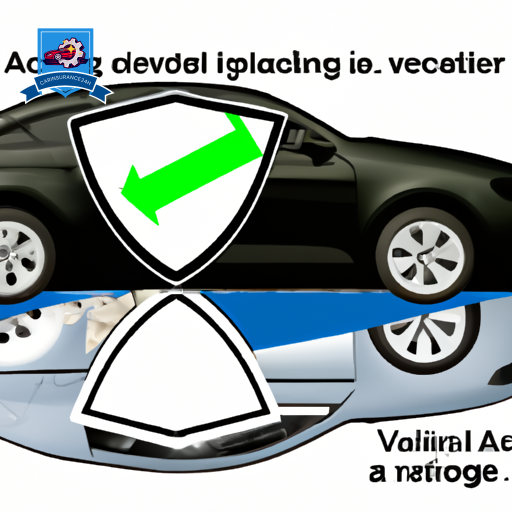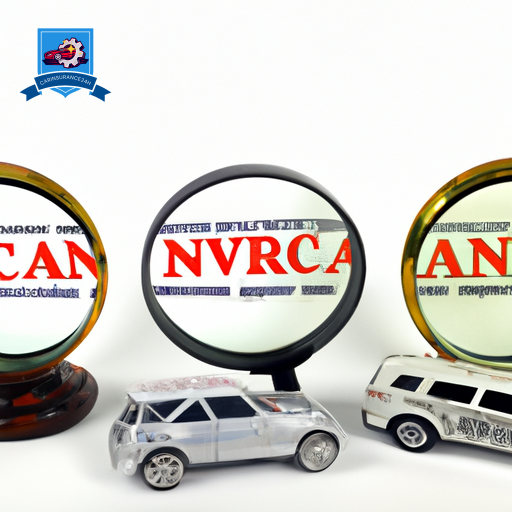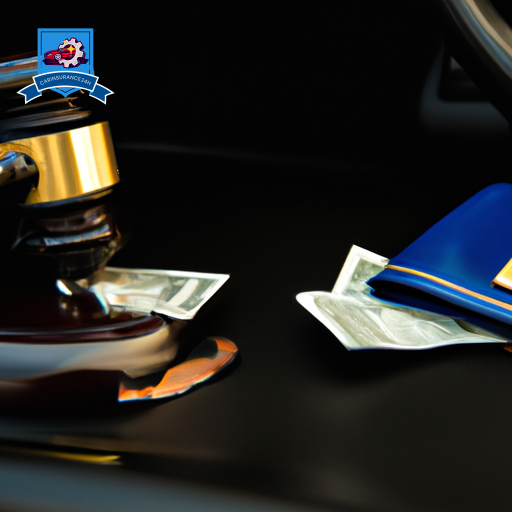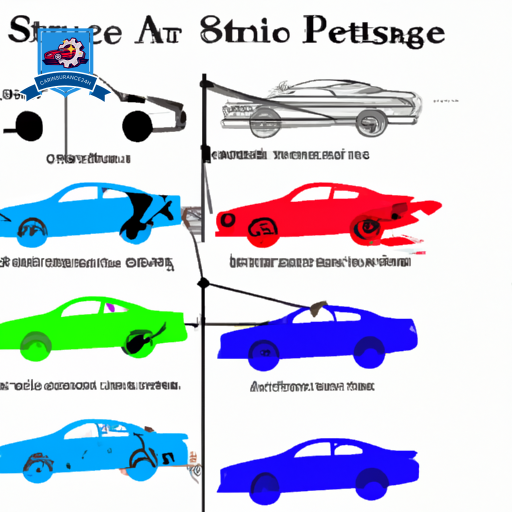Underinsured motorist coverage, though often overlooked, plays a pivotal role in providing financial protection after an accident where the at-fault party’s insurance falls short. This aspect of auto insurance policy fills the void, covering medical expenses, lost wages, and other accident-related costs. However, understanding its nuances, including the policy limitations and state-specific regulations, is imperative. While it offers an additional layer of protection, there can be complex legal considerations involved. Let’s dissect the complexities of underinsured motorist coverage to make sure you are equipped with the knowledge needed to make informed insurance decisions.
Understanding Underinsured Motorist Coverage

In the domain of auto insurance policies, underinsured motorist coverage serves as a critical financial protection package, designed to shield policyholders against financial risks associated with accidents caused by drivers with insufficient liability coverage. This coverage is part of a thorough risk management strategy that guarantees the policyholder’s financial security in the event of an unfortunate incident.
Underinsured motorist coverage, also often referred to as underinsured driver coverage, is a specific type of auto insurance coverage that provides compensation for injuries sustained in an accident involving a driver whose liability coverage is insufficient to cover the cost of the damages. Such a situation usually arises when the at-fault driver’s policy limits are reached, but the victim’s expenses exceed those limits.
Underinsured motorist coverage typically covers medical expenses, lost wages, and other costs resulting from the accident. It is important to note that this coverage applies not only to the policyholder but also to passengers in the vehicle at the time of the accident.
However, it’s important to understand that the compensation available under this coverage is subject to the coverage limits stipulated in the policy. The policyholder can choose these limits at the time of purchase, and it’s advised to opt for sufficient coverage to cover potential losses.
Importance of Adequate Coverage

Given the potential financial implications of an accident with an underinsured driver, securing adequate underinsured motorist coverage becomes significantly important. This form of coverage serves as a form of supplemental insurance that fills in the gaps left by the liability limits of an underinsured driver’s policy. When the costs of an accident exceed these limits, underinsured coverage steps in to provide necessary financial support.
Adequate coverage is vital as it covers a range of expenses that can crop up following an accident. These can include medical expenses, lost wages, and even damage to your vehicle. Without sufficient underinsured coverage, victims may find themselves facing significant financial burden alongside any physical and emotional trauma caused by the accident.
The importance of this coverage is further underscored by state-specific limits. Each state sets minimum liability coverage limits, but these may not be enough to cover all the costs associated with a serious accident. This makes the possession of underinsured coverage even more critical for drivers.
It is important to remember that underinsured motorist coverage is a safety net. It provides peace of mind knowing that if the unexpected happens, you have an added layer of financial protection. Additionally, unlike other forms of coverage, underinsured motorist coverage directly benefits the policyholder, protecting them from the financial risks associated with underinsured drivers.
Evaluating Your Insurance Needs

Traversing the maze of insurance options requires careful evaluation of your specific needs and potential risk factors. If you’re in an accident with an underinsured driver, you’ll be grateful to have underinsured motorist coverage. This coverage is designed to help you manage medical bills, cover bodily injury costs, and aid in claim settlement, particularly when the other driver’s policy limits cannot fully compensate your losses.
To evaluate your insurance needs accurately, it’s important to examine a few key aspects:
- Assess your financial risk: Consider how much you could afford to pay out-of-pocket in the event of an accident. If a significant outlay could destabilize your finances, higher coverage limits may be a wise choice.
- Consider the likelihood of an accident: This includes examining your driving habits, location, and the frequency of your vehicle usage.
- Evaluate potential bodily injury costs: The cost of medical care can be astronomical, and injuries from a car accident can require long-term treatment. Ensure your coverage is sufficient to handle potential medical bills.
- Understand the stacking provisions: In certain states, stacking provisions allow policyholders to combine or ‘stack’ the limits of multiple policies or vehicles to increase the available coverage in the event of an accident.
Comparing Insurance Companies

After evaluating your insurance needs, it becomes important to compare different insurance companies to make sure you select the best underinsured motorist coverage that suits your specific circumstances and risk profile. The right insurance company can provide the coverage limits necessary to protect you against the high costs associated with accidents caused by underinsured motorists.
When comparing insurance companies, consider their financial stability and reputation for claims handling. Financial stability is essential because it determines the company’s ability to pay claims, while a good reputation for claims handling indicates that the insurance company is reliable and efficient in processing claims.
Underinsured motorist coverage is especially important because it provides protection if you are involved in an accident with a motorist who does not have sufficient insurance to cover damages. Its coverage limits are what will pay for your medical bills, lost wages, and other expenses if the other driver’s insurance is inadequate.
Remember, not all insurance companies offer the same coverage limits. Some insurers may offer higher coverage limits than others, so it’s important to understand what each company offers and if those limits meet your specific needs.
Lastly, consider the possibility of legal action. If the underinsured driver’s insurance company refuses to pay, you may need to take legal action to recover compensation. Therefore, it’s wise to choose an insurance company that has a strong legal team and a proven track record of successfully defending their policyholders’ rights. This can provide you with peace of mind knowing that you are adequately protected in case of an unfortunate incident.
Dealing With Car Accidents

In the unfortunate event of a car accident, understanding how to manage the aftermath is essential, particularly when dealing with underinsured motorist coverage. This type of coverage is a component of your auto insurance policy designed to protect you when the at-fault driver’s liability coverage is insufficient to cover your medical expenses and other damages.
After a collision, your immediate focus should be on safety and health. Seek out medical help if needed and report the accident to the police. Then, notify your insurance company about the incident. The claim process may be complex, especially when the other driver lacks adequate insurance. This is when underinsured motorist coverage proves its value. It can fill the gap and provide the compensation you need to cover medical expenses, lost wages, and other related costs.
The role of legal representation becomes critical in such scenarios. A lawyer can help manage the insurance claims process, negotiate with the insurance company, and make sure that you receive the compensation you deserve.
To emphasize the importance of underinsured motorist coverage after car accidents, consider the following points:
- It serves as a financial safety net when the at-fault driver’s insurance falls short.
- It covers medical expenses, lost wages, and other related costs.
- Legal representation can be instrumental in managing the claims process.
- It ensures that you receive the rightful compensation for your damages.
As a policyholder, understanding the intricacies of underinsured motorist coverage can make a significant difference in dealing with the financial implications of car accidents.
Legal Implications of Insufficient Coverage

Moving through the legal landscape becomes much more complex when dealing with accidents involving drivers with insufficient insurance coverage. Legal implications arise when a driver’s insurance coverage is insufficient to cover the damages caused in an accident. Not only do victims face the challenge of recovering from their injuries, but they also grapple with the financial burdens that can follow.
One of the primary solutions to this issue is underinsured motorist coverage. This type of coverage is designed to bridge the gap between the coverage limits of the at-fault driver’s insurance and the actual damages sustained in the accident. It provides a safety net for victims, ensuring that they are not left to bear the brunt of the financial impact.
However, underinsured motorist coverage is not without its legal implications. One of the main legal challenges arises when determining the coverage limits. These limits, which dictate the maximum amount that the insurance company will pay for a claim, can sometimes be insufficient to cover all the costs associated with an accident. This creates a need for complex legal negotiations, often necessitating the involvement of legal professionals.
Further complicating the situation is the issue of uninsured motorist coverage. Like underinsured motorist coverage, uninsured motorist coverage protects victims from drivers who lack any insurance at all. However, the legal implications of dealing with uninsured drivers can be even more intricate, given the complete absence of an insurance company.

When it comes to maneuvering claim settlements with underinsured drivers, understanding the intricacies of insurance policy terms and the negotiation process is essential for securing fair compensation. For victims of a hit-and-run or an accident where the at-fault driver doesn’t have sufficient coverage, the underinsured motorist coverage comes into play. This coverage is a part of your insurance policy and is utilized when the policyholder needs to file an injury claim.
Insurance adjusters have a significant role in determining the settlement amount. They review the details of the accident, analyze your injury claim, and assess the policy limits of the underinsured driver. Based on this evaluation, they propose a settlement amount. However, the policyholder should meticulously review this settlement proposal as it may not cover all the incurred expenses or future medical costs.
To navigate this complex process efficiently, it is vital to:
- Understand your policy terms, specifically your hit-and-run coverage and underinsured motorist coverage.
- Preserve all evidence related to the accident, including medical reports, photographs, and witness testimonials.
- Consult with a legal professional to verify the insurance adjuster’s settlement amount is fair.
- Communicate effectively with the insurance adjuster, presenting your claim convincingly and negotiating, if necessary.
Understanding State-Specific Insurance Laws

Each state in the U.S. has its unique set of auto insurance laws and requirements, including stipulations for underinsured motorist coverage, which individuals must comprehend to guarantee adequate protection. Not grasping these state-specific laws can lead to financial devastation following an accident with an underinsured motorist.
Certain states mandate underinsured motorist coverage as part of their auto insurance policy, while others leave it optional. Coverage limits also vary from state to state, which defines the maximum amount your insurance company will pay for a covered loss. A thorough understanding of these laws can help individuals to make informed decisions while selecting their coverage limits.
Legal action may become necessary if the underinsured driver’s policy can’t cover all your expenses. In some states, you’ll need to exhaust the at-fault driver’s limits before your underinsured motorist coverage kicks in.
To better illustrate the variation in state-specific laws, consider the following table:
| State | Underinsured Motorist Coverage Requirement |
|---|---|
| New York | Mandatory |
| Texas | Optional |
| California | Optional |
Maximizing Protection With Stacking Options

To enhance the financial protection offered by underinsured motorist coverage, policyholders can consider the strategy of ‘stacking’ their insurance policies. Stacking can greatly boost coverage limits, providing a buffer against the financial implications of accidents with underinsured motorists.
Stacking options involve combining the coverage limits across multiple vehicles or policies. It enables policyholders to claim more than the limit on a single policy when an accident transpires. However, the legalities and regulations surrounding stacking differ by state. It is important to understand state requirements before opting for stacking options.
- Unstacked Coverage: This is the standard coverage limit on an insurance policy. If a policyholder has multiple vehicles, each with its own coverage limit, these are not combined or ‘stacked’.
- Stacked Coverage: This is where the coverage limits of multiple vehicles or policies are combined, increasing the total available coverage.
- State Regulations: Some states allow stacking, while others do not. It is essential to understand your state’s stance on stacking before implementing this strategy.
- Legal Action: If an underinsured driver causes an accident, and your coverage limit is exceeded, stacking may allow you to claim more. However, if stacking is not enough, legal action may be necessary to recover costs.
Stacking options can offer a safety net, enabling policyholders to navigate the financial challenges that arise when involved in an accident with underinsured motorists. Understanding your state’s requirements and the potential need for legal action can help you maximize your protection.
Frequently Asked Questions
What Specific Injuries Are Covered Under Underinsured Motorist Coverage?
Specific injuries covered depend on the policy details, but generally include physical injuries sustained in an accident caused by a driver with insufficient insurance. This can encompass medical expenses, lost wages, and rehabilitation costs.
How Does Underinsured Motorist Coverage Affect My Auto Insurance Premium?
The addition of underinsured motorist coverage to your auto insurance premium can potentially elevate the cost. However, it provides critical financial protection in the event of an accident with an underinsured driver.
Can Underinsured Motorist Coverage Be Used in Hit-And-Run Incidents?
Yes, underinsured motorist coverage can be applied in hit-and-run incidents. The extent of coverage, however, varies by state and individual policy details. It’s important to understand your policy’s terms for such circumstances.
Are There Any Circumstances Where Underinsured Motorist Coverage Would Not Be Beneficial?
While generally beneficial, there may be scenarios where underinsured motorist coverage is less advantageous. These could include situations where the policyholder’s health insurance sufficiently covers injury-related expenses, minimizing the need for additional auto insurance coverage.
How Does Underinsured Motorist Coverage Interact With My Health Insurance Policy?
Your health insurance policy may cover medical expenses following an accident. However, underinsured motorist coverage can further assist by covering costs exceeding the at-fault driver’s insurance limits, including lost wages and pain and suffering.
